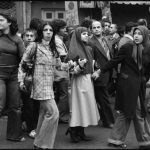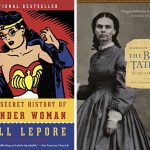
The latest interview in our NEP Conversations series focuses on Global Environmental History, a highly innovative, exciting and challenging course taught by Dr. Megan Raby. The course description is as follow:
Global Environmental History explores how human societies and natural environments have shaped each other in world history. This semester, the course will focus on the theme of climate change. The planet is currently warming at a rate unprecedented in human history. How can historical perspectives help us face this present-day problem? This course will examine how a variety of human cultures have understood and responded to changing climates in the recent and deep past. By exploring topics from the “Little Ice Age” to melting Andean glaciers, we will consider how both natural and anthropogenic climate variability has historically shaped migration, colonialism, conflict, technology, perceptions of nature, and cultural values. We will also analyze how historical shifts in practices of land use, industrialization, and capitalism have led to the global warming we are experiencing today. Finally, we will trace how researchers have pieced together our contemporary understanding of climate science and how politics and culture have shaped societies’ responses.
In this conversation Dr. Raby describes the origins of the course and how it connects to the Institute for Historical Studies theme for 2021-21, Climate in Context. For more on Climate in Context, see here. In this conversation, Dr Raby is speaking with the Editor of Not Even Past, Adam Clulow.
It’s really striking to me how much you cover in this course. What kind of models (if any) did you have in mind when you designed this course?
There are a lot of people who teach global environmental history courses. And in fact, there have been panel discussions at the American Society for Environmental History, for example, about how to teach global environmental history, because at least in the United States, a lot of environmental history courses were essentially American environmental history, which is a manageable topic.
American environmental history has some standard narratives involved. But with global environmental history, you run into that feeling of, oh my God, I have to cover all these things, but actually letting go of coverage is the first thing you do. You’re not trying to cover everything that happened. And that’s the problem with any kind of world history course. You have to decide what the course is actually about and then make thematic selections.
That’s how I decided teach this global environmental history course, that is by having different themes and different weeks. The main idea was to introduce students to the methods and some big ideas in environmental history as a subfield of history by looking at different themes each week from the Columbian Exchange to animal histories and so on. It was a great class in that way. But after teaching it a few years, I just wanted to change it up a little bit and thought, you know, it also would probably be easier to focus on one theme.
And then I felt some urgency to deal more with climate change. Instead of having a day or a week at the end of a class to deal with something that’s supposedly contemporary, I felt like, why not take this on as an actual through-going historical problem? Basically, I thought next time I teach this class, I’m going to teach it, focusing around climate change and really focusing around a specific question like: how can historical perspectives help us face this present day problem? I wanted answers to this question, so I thought it would give me an excuse to read a lot more in depth and widely in any kind of history that seemed relevant for thinking about climate change and then try to find a way to shape that into the course, which is what I did. And then because it’s an upper division seminar, it’s a smaller class. It’s totally discussion based and it’s writing intensive.
Basically, the students and I work through that material together and try to come up with answers to that question of how historical perspectives can help us face climate change. And there’s many different ways to answer that question. But that’s basically where the idea for the class came from. And so global environmental history is a course that many different environmental historians teach, but I don’t think anybody teaches this topic in particular the way I do, and I like the way that I went about it.
How do you introduce the course to someone who is not familiar with it?
We think of climate change as a present day and maybe a future problem. But I think if we’re going to tackle this, it’s also not just a scientific problem. It’s something we need deeper, humanistic and specifically historical perspective on. That’s why in the class, one of the things that we do––one of the units of the class––is to look at human cultures and how they have understood and responded to past experiences of natural climate change.
The rate and intensity of change in the Medieval Warm Period, for example, or the Little Ice Age, might be less than what we’re about to face, or starting to face, here with climate change. But can we learn something about the resilience or the fragility of societies in the past? And so that portion of the course ends up being comparative world history with a few different cases.
It also gets students, some of which are history majors and some of which are not and haven’t had that much history, to think about how people in the past have very different values than themselves. Or also how they can empathize with people in the past and might see similarities. Things like: during past major climate shifts, what groups of people within societies were more vulnerable to these changes?
When you take this deeper time perspective, there’s opportunity for both seeing the differences and similarities with people from the past.
You have a very long time frame for this course, namely hundreds of thousands of years. This translates into your three assignments. You start with the deep past. Then the past 200 years. And then you have the imagined environmental histories of the future, which are 50 years, 100 years, 150 years, 200 years ahead. Can you talk a bit about those three time frames and how students engage with them?
I think that the way that we deal with this long span of time is by not trying to be comprehensive, but we actually highlight questions about temporality directly. So I think it’s actually really useful for thinking about historical methods. In one of the first units of the class, we’re thinking more comparatively about how different cultures responded or experienced different climate periods in world history.
But we approach temporality differently in the section that follows. We are not only looking at the past couple of centuries, including the actual period in which anthropogenic warming occurs. It’s not just a chronological move forward, but we’re also trying to think how the questions change during that section of the course. We’re focused on: What are the root causes of global warming? And what’s happening now? Also, how did people come to understand that climate change was happening? Thinking about the history of ideas––from the idea that “rain follows the plow” to the Keeling curve.
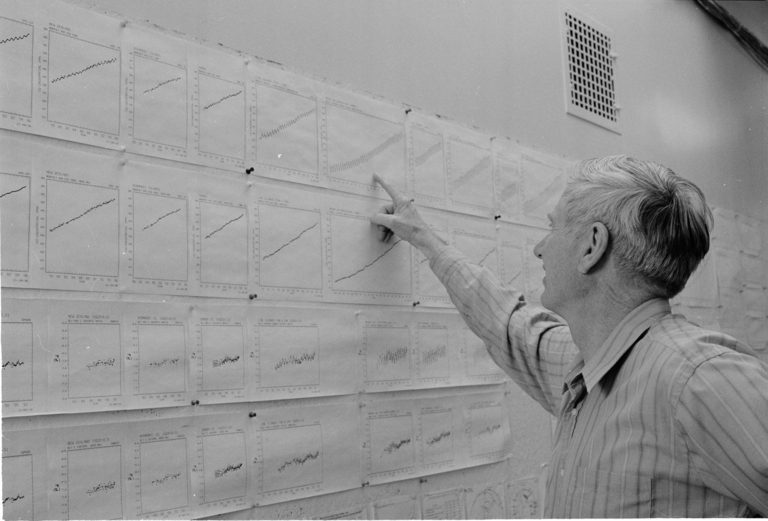
So we’re actually highlighting how the historical questions that we’re asking are changing. I think that that’s one way that that we deal directly with the temporal questions. What temporal span matters actually depends on what historical questions you’re asking. By addressing that directly, I think that gave it structure and also got us really at historical methods, which I think was one of the most fun aspects of the class and––although it threatened to be unwieldy––kept it from being unwieldy.
Then there’s that final unit, which was a short unit in which I asked them to think about future histories and even write their own future history. That was inspired by a book, a dark satire, called The Collapse of Western Civilization by Naomi Oreskes and Erik Conway. They are both historians, historians of science, who’ve written about the phenomenon of climate change denial. But they decided to write a second book together, this fiction book.
They write as if they are historians in the year 2393 living in the Second People’s Republic of China. The book starts in our past and our present, and then becomes, as it goes on, the future––which is the past for these imagined authors. It’s a really interesting thought experiment. So I ask students to do something similar. They imagine a future history based on extrapolating from histories that we’ve read in class. That allowed them to explore their own hopes and fears about the future. It allowed them to make their reflections on the whole semester, basically as personal as they wanted to.
I recognize it’s a bit risky, because we don’t usually write fiction in history classes. It’s not something I feel comfortable doing either! We don’t like to make predictions as historians. I don’t think most of us like to talk about the future, but actually, in an odd way, by writing fiction, it allowed them to show me even more clearly how they had come to think like a historian. Because they had to use not only some climate scientists’ predictions for the future as their evidence in the paper, but also had to imagine what kind of historical evidence we’re going to leave behind.
One student wrote about an archeology dig around the UT tower and what might be left for people in the future. Another, imagined being an oral historian, talking to someone who was alive today and asking them what they understood was going on around them. Another wrote about being a memory safe keeper and basically an archivist in the future. So they showed me that they understood what historical sources are, and could be––as well as recognizing that history isn’t just about reconstructing what happened, but also about how future people will understand and explain our actions––or inactions. And how might they judge us. Things like that. To do the kinds of things we have been doing for people in the past and do this thought experiment into the future helps tie the course together at the end and give us some closure for something that is actually quite difficult to talk about a lot of the time.
That ties perfectly into the next question, which is what do you hope students take away from this course? Because it seems to me that, you want to reflect on how historical perspectives can inform our responses to present-day climate change, which is kind of obvious to historians, but not necessarily obvious in the public discussion about climate change and not always necessarily obvious when you talk to climate scientists, for example.
I hope that they take away an understanding that history does matter for how we confront climate change, and other present-day issues. Climate change is often framed as solely a scientific problem––or, more and more students do understand it as a political problem. But it feels very intractable to them. When we look at the past, we understand that people didn’t face exactly the same issues that we face now, but faced things that may help inform how we approach what we’re doing.
Also understanding the root causes of what’s happening now may give us ideas about how to undo, or mitigate, or respond to what’s been done in the past. I certainly think that different students came away with different ideas about what history told them should be done. Some of them looked towards some degree of technological solution, but I think that they maybe recognize that technology is not going to simply come in and save us. Looking at past examples of, for example, ideas about controlling the weather––which the US military was involved in––some degree of humility about technological innovations came out of it. A greater understanding of how people who are already vulnerable, disadvantaged and disempowered in societies in the past, even the deep past, seem to be more affected by big climate shifts––that resonated well with what we’re seeing now today. But also some understanding that even elites and wealthy societies in the past were not immune to major environmental shifts and changes. Those are some things that generally came out.
But, definitely, students in the class had different takes on these things and came to different perspectives on their own. If they can just see that they can be empowered to envision a future that they want to see and that they can see they’re not doing this alone, but that they can draw on the knowledge and wisdom of people in the past, possibly, or an understanding of the follies of people in the past, too. That’s what I hoped would come out of it. It felt like that did happen when I taught it last.
At the end of the semester the students wrote future imagined environmental histories. The ones that I read were quite evenly split between positive and negative, as to whether there was hope or not. Going through this long history, what did you find students took away? A sense of optimism that these issues could be confronted or a sense that we confront these problems and they’re never solved?
The different future histories that the students wrote––I was excited by, and we discussed as a class, how interesting it was that students approached that question in very different ways. Now, you brought up how tonally and in terms of the relative optimism or pessimism, there’s a wide array, right? Some of them are pure dystopias. Some of them are quite optimistic and imagine some kind of way forward, in which either society changes greatly or incremental changes are made. They had that range of positive and negative responses.
Interestingly, in talking with them, I’m not sure that the tone of what they wrote necessarily correlates to their feelings about what will really happen. I think, for some of them, writing the darkest fears version of it… I told them, “Feel free to explore your greatest hopes, your darkest fears, or try to make it as realistic as you possibly can. Any of those is an option as long as you show me that you understand what a historian does, and you draw on the sources that we read in the class.” …So I think some of them exorcised some of those feelings by writing in that way.
The other thing, though, that I think is interesting about the range of ways that they responded to that prompt was that the scale of what they wrote also differed quite a lot. One of them, for example, is a weather report for a storm that’s coming in. It discusses the idea that there might be category six or seven hurricanes, but also includes interviews with local people and what they remember the climate being like on the Gulf Coast during our present day (their past). That is a micro-scale approach to it, whereas others were more in the vein of Oreskes and Conway, writing in a far future year that has a totally different denomination, such as 100 A.C.––“After Catastrophe.”
Some of the students wrote on very big scales, similar to some of the things that we read in the class. They were also showing me that they understood different scales of history. Some of them were very personal… What I think is important is that we talk directly about the fact that a topic like climate change, while the science isn’t controversial anymore, involves emotions. Their feelings get raised, whether they discuss the politics of how to deal with climate change, or about how we imagine our own life in the future, and the course of humanity.
These things all raise anxieties, so we need to actually discuss them rather than avoiding the topic. I wasn’t too worried that some of them wrote dark pieces. I was happy to see the full range of emotional and intellectual responses in their essays.
This is why I find the course so exciting, because it empowers students to deal with climate change. I talk to many students who are genuinely in desperation about it. They don’t know what to do and they feel the system has betrayed, particularly their generation that’s going to have to deal with these huge changes. So I think this course is so exciting because it gives them the tools to grapple with the future. Is this how you planned the course?
I’m glad that that’s what you noticed about the class, because I do envision this as giving students the historical tools that they need to find how they can take some kind of action on climate change. There are many different ways that they can. And of course, historical tools are not the only tools. Historians need to partner with scientists, with policymakers, with artists, to really have the bigger transformation that we need to confront this.
Having that interdisciplinary historical spirit was what was also empowering, I think, in the class. Because not all of them wanted to be historians themselves, but they could all see how history was relevant to what they did want to do. There were two journalism majors in the course, for example, and it was very clear to them that journalism needed to be more historical and stop acting like this is new. We’ve been hearing these stories over and over again.
Some of them were science majors, some of them political science, and some of them were historians for whom dealing with scientific evidence, like tree ring data and ice cores, and incorporating that kind of scientific perspective was a new thing. They were coming from different perspectives there. I think that, in and of itself, having those tools is what did make the course empowering.
Many of them were quite aware that they’re are going to face a climate regime that has not been seen in human history within their own lifetime––by 2100, where most of the climate models end, is how long they can expect to live. The climate models tend to end when their own children and grandchildren will be alive! We don’t we don’t tend to predict out that far, at least in public.
I know personally that it can feel insurmountable, but actually they had a lot more hope and energy to confront this than I felt going in! I was energized by getting to deal with this in an intellectual way and getting to read new things. Even though I do history of science and environmental history, I don’t work specifically on climate. This gave me an excuse to read a bunch of stuff I’ve been interested in reading.
I was energized by dealing with those interesting historical questions about temporality, and sources. But I don’t think they feel like they can afford to despair. This is their lifetime they’re talking about. It’s not somewhere down the line. It’s now and in their own lifetime. Indeed, some of them expressed openly that they personally felt climate anxiety. But at the same time they expressed so much more hope and a “don’t have time to be depressed” kind of spirit about it. Some of the students joined the class in order to get a Writing Flag credit, and they didn’t necessarily initially know some of this stuff at all.
For them, a lot of this was new. There’s also a range in what kind of background the different students had. By the end, even though their academic disciplines, their politics, their life experiences were all very different, they all really formed a community where they were really interested to hear each other’s perspectives and ideas, and interpretations of the past, and ideas about the future.
I was really happy that in that microcosm of the class they formed the kind of community and interdisciplinarity that I think is needed in broader society to confront some of this stuff. That was what I enjoyed most about the class, actually.
I know your entire career sits at the intersection between science and history, but many students perhaps don’t expect to read relatively dense scientific works in class. Can you say something about how the course works to break down traditional silos between the humanities and the sciences?
The way that science and history come together in this course and in the fields that I work in, environmental history and history of science, they come together in in different ways. I tried to really signpost that clearly to the students. To take that course and to be successful in that course: no one needs to be a scientist. Really, what we did early on in the course, in the first unit was have a couple of days of basically a climate science primer. Like, look, here’s where the current science stands, just so you can understand generally how scientists know what they know currently, and what they understand currently about the climate science.
But we got more nuanced and subtle with it, more sophisticated with it, as the course went on. And so we dealt with science in a couple of different ways. When we were talking about that more comparative deep history work early on in the course, we were working with historians who call themselves “climate historians,” who are not themselves, going out and gathering ice cores or something, but are really reading and understanding the current climate models of the past that scientists are producing and using that kind of evidence in their work.
It actually gave us a chance to be better historians by understanding that, for most historians, a primary source is an archival document. It’s a document. But there are other kinds of sources out there, physical sources like a tree rings, that can tell us things about the past. And that doesn’t make someone who studies ice cores themselves a historian, but they can tell us something about what temperatures were at a certain period of time.
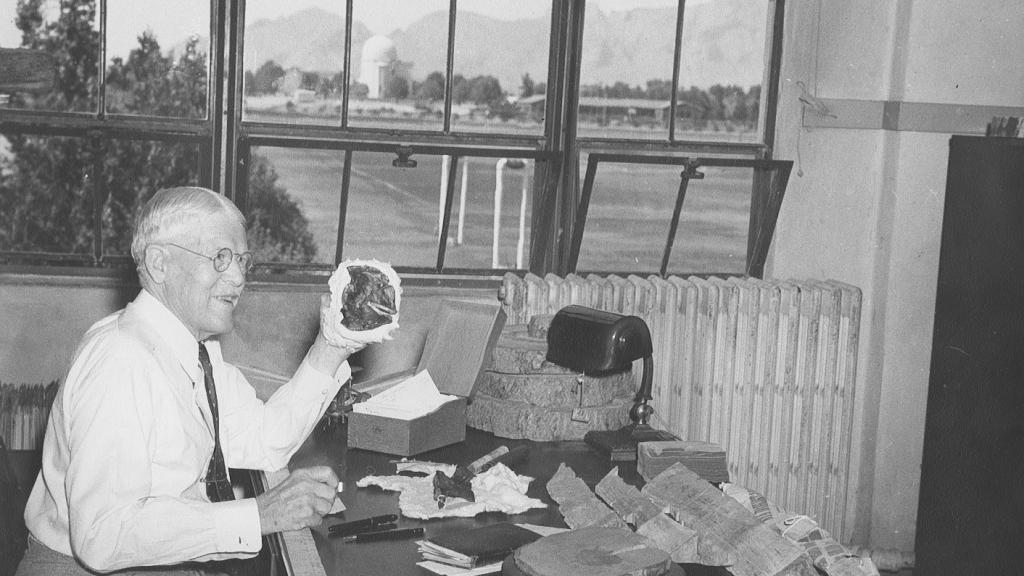
What a historian is going to do is make meaning out of that and give us a narrative. Those things aren’t incompatible with each other either. We can do interdisciplinary work that draws on new findings from various kind of climate science, but that can also bring in the kind of interpretive work from documents, or oral histories, or art that historians are more used to using. It got us to really talk about primary sources. So that’s one way in which we brought in science.
I didn’t have them go back and read and original papers of climate scientists so much, but we did at least read enough to understand what that work looks like and the kind of work you need to do if you going to reliably integrate findings from science––knowing that the science is constantly changing. Of course, historical interpretations are also constantly changing and moving forward! So that was one way in which we used science. The other way in which we used science is the way I mostly do in my own my own research, which is––as a historian of science––thinking about the social, cultural, economic and patronage context of the science that gets made.
So how do we even know that CO2 is increasing in our atmosphere? Well, we can learn about Charles Keeling and his observatory at Mauna Loa and how he managed to get funding for this and how this comes out of a Cold War context. And why were US and Soviet scientists interested in the atmosphere in the 1950s? But, also, the history of science helps us see that the idea of human impacts on the environment, even human caused climate change, is not as new as most people think.
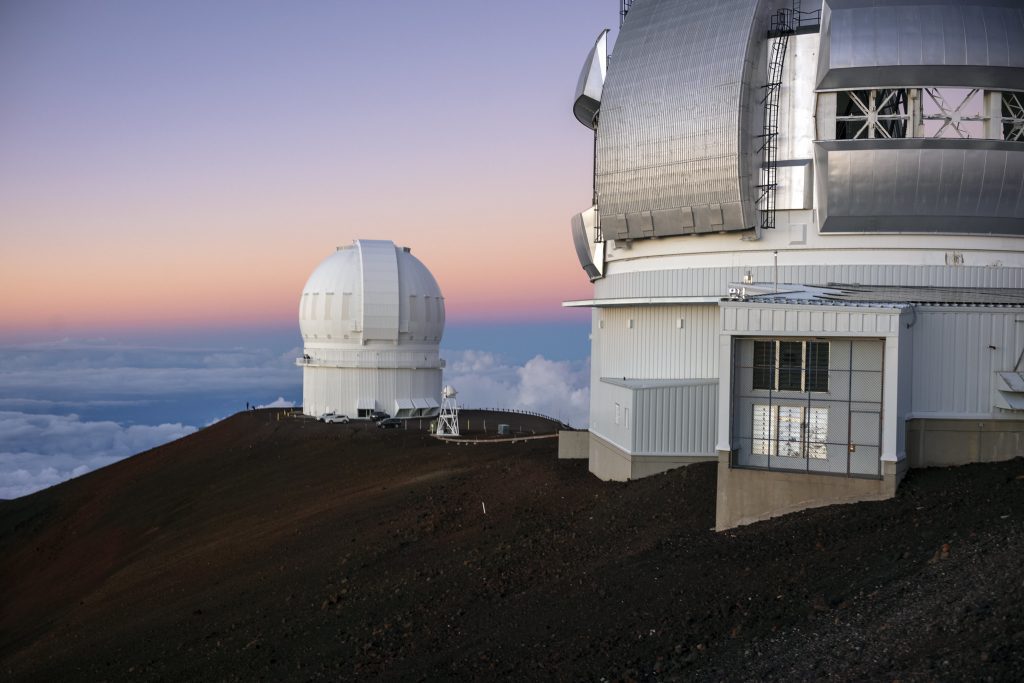
The actual science of global warming as we know it now goes back to the 19th century. We understood that CO2 is a greenhouse gas in the nineteenth century and people thought “We’re emitting a lot of CO2 now that we have industrialization.” So the possibility was known, but its meaning was different then. Warming seemed very distant in the future, if it might even happen. And if things got a little warmer and we held off an ice age, what’s the problem? In the 19th century, the emerging fear was more that Ice Age would return… But even in the 18th century, people had a feeling that human actions might change the climate. Rain follows the plow or that deforestation could cause desiccation. A variety of different kinds of ideas about human impacts on the environment––and how they might come back to bite us––actually are things that people were thinking about for a very long time.
That kind of environmental reflexivity is something we also talked about in the class. That’s a different way that we looked at science, historically. So, not just using science as a primary source, but also historically contextualizing climate science itself. Because it’s a cultural and social product. Actually, that’s why we can take it as reliable! We’re seeing all these different scientists with different interests actually come together, converging on the same kind of answers. So it can really help us understand why we can rely on science, help us to be more scientifically literate without feeling that we have to be scientists ourselves…
How did this course feed into the wider IHS theme for 2020-21, Climate in context? Is the course part of the origin story for this theme?
Actually I have to give Erika Bsumek the main credit for wanting to do an institute theme. She has her own ways in which it came out of her pedagogical work lately, but we met to talk and thought: you know, if we do an environmental history theme, it really should be climate focused in some way. And I was in the midst of teaching this class.
I think the core question––the very wide open question––of, “How can history inform our response to climate change?” was at the center of both the course and the IHS theme. In what ways does this supposedly unprecedented situation, in certain ways, have useful precedents in human history? In what ways can history nevertheless be useful? It seems to put history in a place of not being useful. If we have never faced this before, how can history possibly inform us?
And yet, if we really do our jobs as historians, I think we can see that there are many ways in which history gives us vital tools to confront climate change. Erika and I talked about aspects of this class, and they made it into our proposal. The course was definitely central to why I said yes as soon as she approached me!
Thank you for speaking with us today and for telling us more about this fantastic course.
